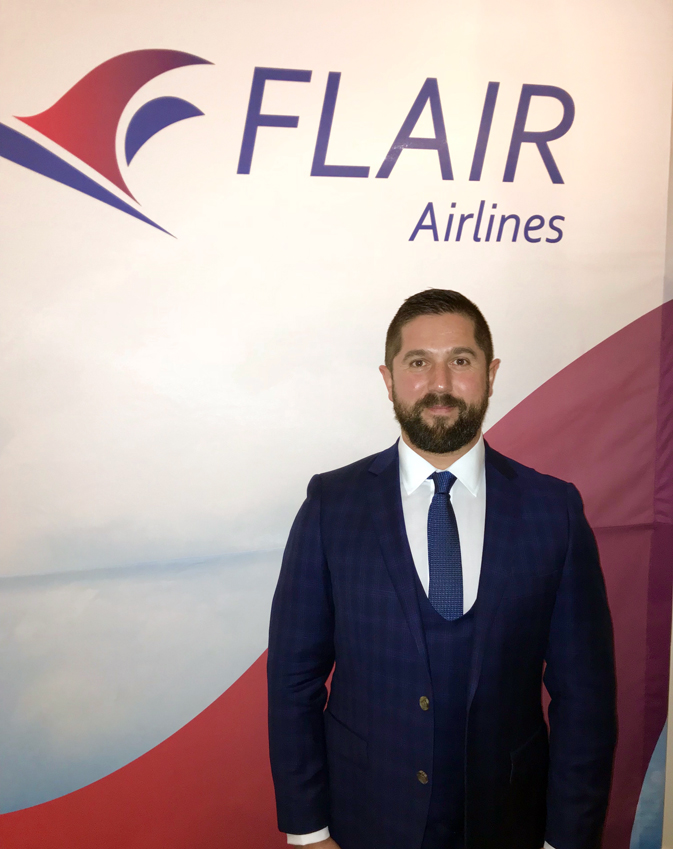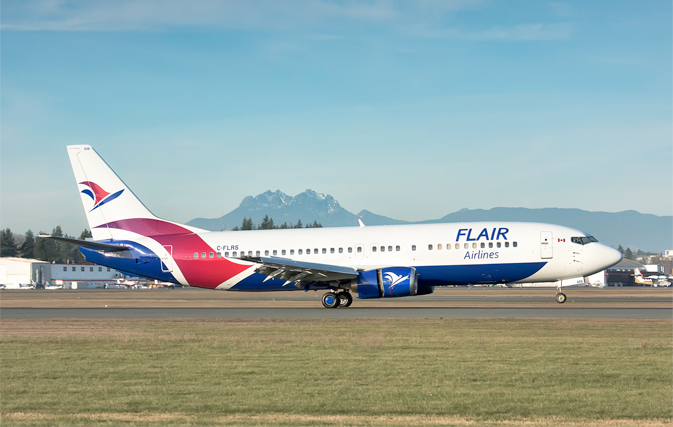This is Part 2 of a two-part series. Click here to read Part 1.
TORONTO — Ultra-low cost carriers aren’t known for working with travel agents and very few offer commission. But contrary to traditional thinking, Flair Airlines gets “a surprising amount” of its bookings from travel agents.
“It’s a fair portion,” says Mirza Smajic, Director of Passenger Sales. “We think travel agents want more than two major players in the market. We will not let them down.”

Mirza Smajic, Director of Passenger Sales, Flair Airlines
Smajic adds: “Many airlines see travel agents as competitors because they want as many direct bookings as they can get. [But] travel agents are still playing a huge role in the travel industry. We do want travel agent business and we appreciate travel agent business.”
Commission levels are subject to negotiation and are based on volume, he added.
It’s been a busy past few months for Flair. In December 2017, with new livery on its 156-seat B737-400s, the airline added Toronto Pearson, Kelowna and Vancouver flights. Flair’s route network also includes Hamilton, Winnipeg, Edmonton and Abbotsford.
Flair also announced it was starting to distribute its content via GDS.
Already live with Amadeus, Flair will also go live with Travelport (Worldspan/Galileo) in mid-February and is in final negotiations with Sabre.
Flair is adding two new aircraft to its fleet at the beginning of this year. For 2019, Flair said it expects to add four more Boeing aircraft to accommodate the nearly 1.5 million passengers that the airline forecasts will be flying Flair in 2019.
And yesterday Flair announced its new ownership as well as a new CEO, Jim Scott, who said Flair is positioned as a premium ULCC. Scott was one of the co-founders of rival Canada Jetlines and was CEO of that company from 2012 to 2017.
Scott’s appointment as CEO comes six months after Flair’s purchase of NewLeaf Travel Company’s assets in June 2017. Flair Airlines founder and former president Jim Rogers has sold his shares, but will remain on the advisory council until 2019.
While it now operates primarily as a scheduled carrier, Flair has more than 12 years of experience as a charter carrier.
Many in the industry still associate Flair with NewLeaf, the short-lived travel company that operated as a re-seller for Flair fares. NewLeaf was never an actual airline; it used planes chartered from Flair Airlines.
Asked about NewLeaf, Smajic has this to say: “Execution is crucial; you need experienced sales people, experienced marketing people. It was just unprofitable.”
Many have pointed out that Canada’s size, geography and demographics make it a challenge for ULCCs. “For the ultra low-cost carrier model to work, you need population density and you need it in cities that are about 1.5 to 2 hours apart. Europe is the best example and you can see the ULCC boom in Europe. The U.S. is another example. Although in the U.S. the ULCCs operate on either the West or East Coast,” says Smajic.
“I do believe there is room for two ultra-low cost carriers in Canada. As long as it’s divided regionally,” he added.
Flair knows it’s facing competition from ultra low-cost carriers Swoop and Canada Jetlines, both aiming for summer 2018 launches. But until those carriers are up and running, they’re not on the radar yet as far as Flair is concerned. “They’re paper airlines. I’m not competing with airlines that aren’t flying yet,” says Smajic.
Canadian travel agents have seen airlines come and go. What makes Flair different? “You need an execution plan. You can have an amazing idea but without an execution plan it’s not going to work.”
In addition to Flair’s 12+ years in the airline industry, the carrier also has more than 225 employees. “We’re responsible for those employees. We want to make sure this works properly,” says Smajic.
What’s next for Flair? Transborder routes. Smajic says the carrier plans to add transborder flights, most likely to the East Coast and potentially into New York or Boston, by June 2018. “We’re also looking at sun destinations.”

